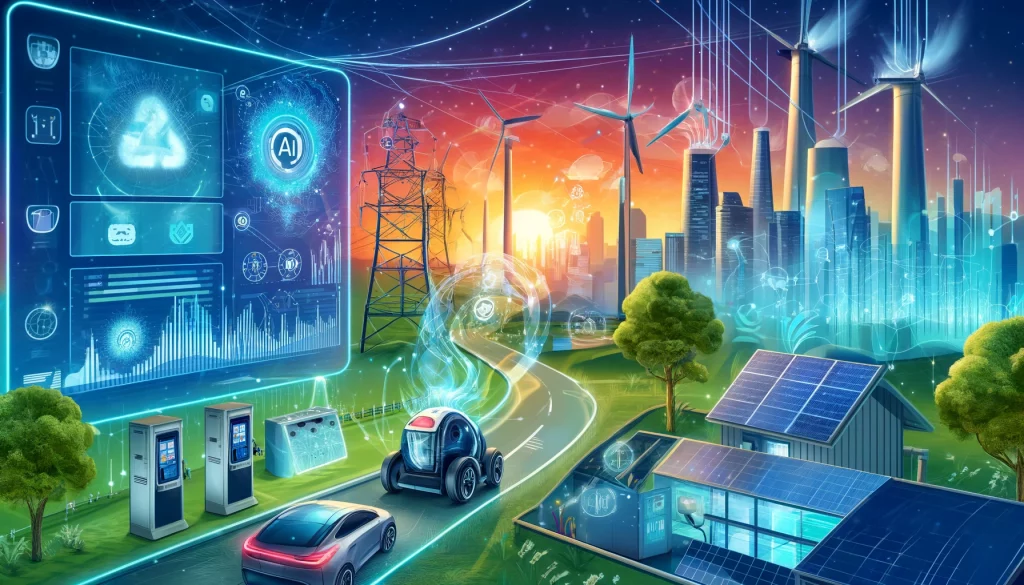
The Next Big Trend in AI in Electrification: AI-Powered Energy Management Systems
Curiosity drives innovation, and nothing exemplifies this more than the exciting developments in AI within the electrification sector. As we stand on the brink of a technological revolution, AI-powered energy management systems are emerging as the next big trend, promising to transform how we produce, distribute, and consume energy.
Understanding AI-Powered Energy Management Systems
AI-powered energy management systems leverage advanced machine learning algorithms to optimize the entire energy ecosystem. These systems can predict energy demand, manage supply from various sources (including renewables), and optimize energy storage and distribution to ensure maximum efficiency and stability.
Pros and Cons of AI-Powered Energy Management Systems
Pros:
- Enhanced Efficiency: AI systems analyze vast amounts of data to optimize energy usage, reducing waste and lowering costs.
- Real-Time Monitoring: Continuous monitoring and predictive maintenance prevent faults and reduce downtime.
- Renewable Integration: AI seamlessly integrates renewable energy sources like solar and wind, stabilizing their variable outputs.
- Personalized Insights: For consumers, AI provides tailored recommendations to reduce energy consumption and costs.
Cons:
- High Initial Costs: Implementing these advanced systems requires significant investment.
- Cybersecurity Risks: Increased connectivity raises the potential for cyberattacks.
- Data Privacy Concerns: Extensive data collection necessary for AI functionality can lead to privacy issues.
- Technology Adoption Barriers: Resistance to new technology can slow down widespread adoption.
Market Opportunities
The rise of AI-powered energy management systems opens up a multitude of market opportunities:
- Smart Grids: Modernizing aging infrastructure with AI can enhance grid reliability, efficiency, and integration with renewable energy sources.
- Electric Vehicles (EVs): AI optimizes EV charging infrastructure, improves battery management, and supports the broader adoption of EVs.
- Smart Homes and Buildings: AI enables automated energy management, leading to significant cost savings and promoting sustainable living practices.
- Renewable Energy: AI can manage the intermittency of renewable energy sources, making them more reliable and appealing for large-scale adoption.
Potential Risks
While the potential benefits are immense, there are also significant risks to consider:
- Cybersecurity Threats: As systems become more interconnected, the risk of cyberattacks increases. Robust security measures are essential.
- Data Privacy: Safeguarding the vast amounts of data collected by AI systems is crucial to maintain consumer trust.
- Regulatory Challenges: Navigating evolving regulations and standards for AI and energy systems can be complex.
- Cost Barriers: The high initial investment required for AI systems can be a significant barrier, especially for smaller organizations or developing regions.
The Impact on the Industry
The electrification industry is already feeling the impact of AI-powered energy management systems:
- Improved Efficiency: Energy providers are achieving unprecedented levels of efficiency, leading to cost savings and reduced environmental impact.
- Enhanced Reliability: Real-time monitoring and predictive maintenance are reducing outages and ensuring a more stable energy supply.
- Sustainable Practices: The ability to integrate and manage renewable energy sources effectively is accelerating the shift towards a more sustainable energy future.
- Consumer Empowerment: AI is providing consumers with the tools and insights they need to manage their energy consumption more effectively.
AI-powered energy management systems represent the next frontier in electrification, offering a transformative approach to how we produce, distribute, and consume energy. The benefits—from enhanced efficiency and reliability to greater integration of renewable energy—are substantial. However, addressing the associated risks, such as cybersecurity and data privacy, is crucial to realizing these benefits.
As we navigate this exciting new landscape, the potential for AI to drive positive change in the electrification sector is immense. By embracing innovation and addressing the challenges head-on, we can harness the power of AI to create a more efficient, reliable, and sustainable energy future. Curiosity and innovation continue to be our guides as we explore and share the knowledge that will change the world.
